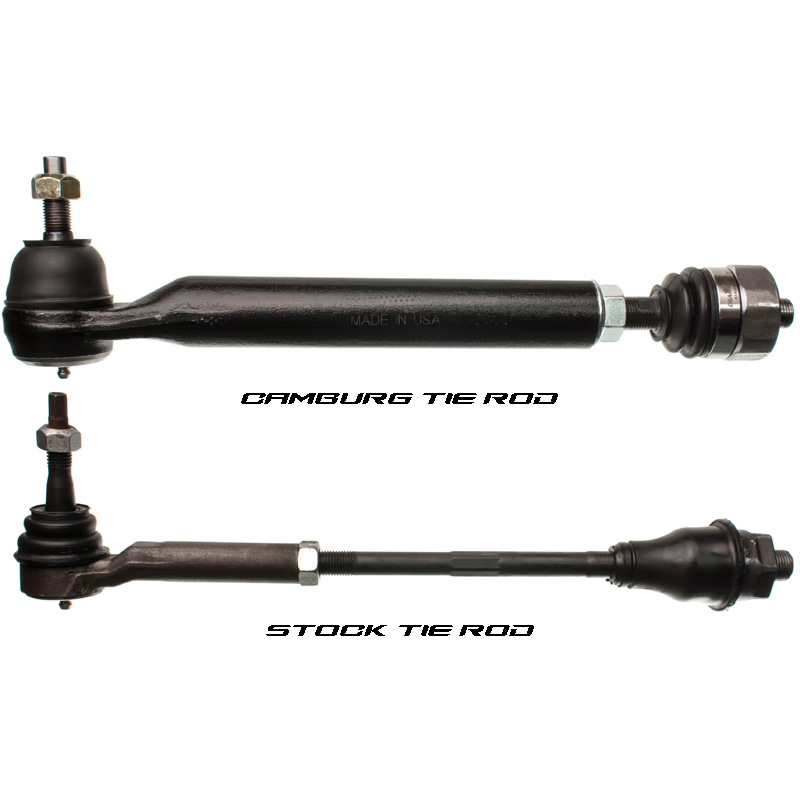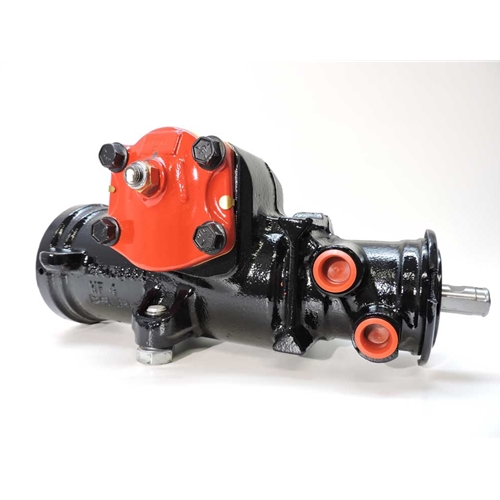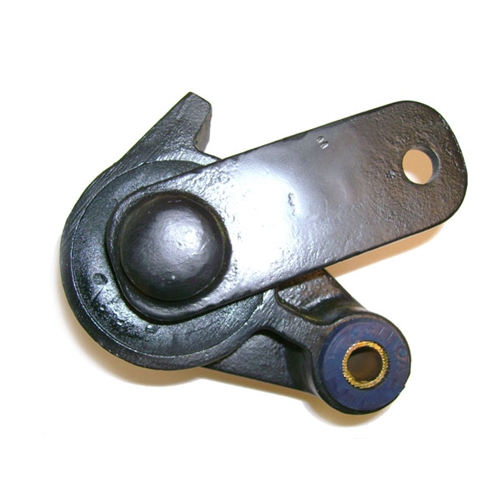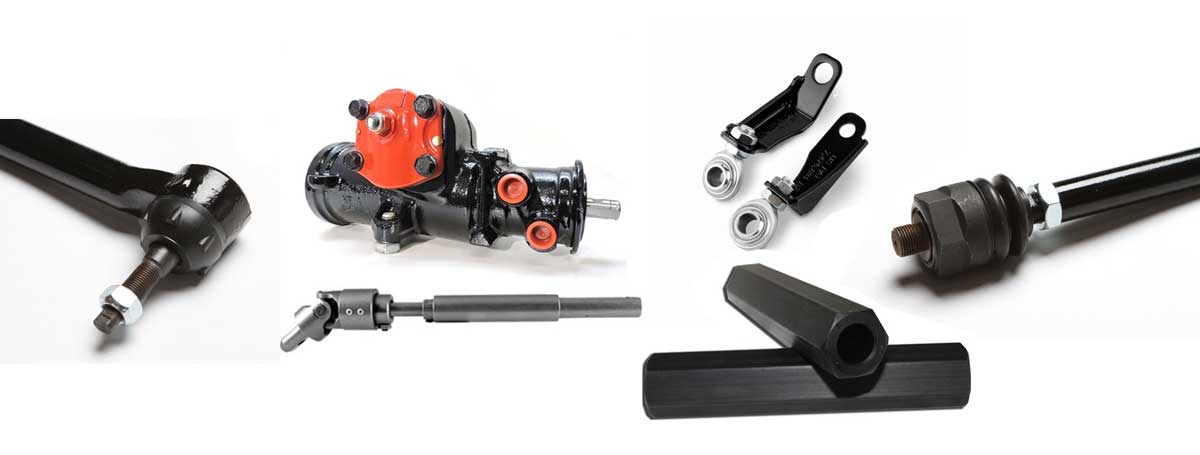Written By: L.T. Tolman
When it comes to keeping an older truck on the road, you’ll always have small issues and maintenance items that need to be addressed, regardless of the make or model; it’s just a fact of life. Yes, a brand-new truck has a warranty, but the price tag can be off-putting. The trick to daily driving an older truck is purchasing one that’s been well looked-after, and taking care of the failure prone items before they leave you stranded. We’ve already spent quite a bit of time on the Duramax engine and Allison transmission, so today well look at the rest of the truck, specifically steering, suspension, and the rest of the drivetrain. The issues discussed will directly apply to 2001 to 2016 Silverados and Sierras powered by the 6.6 Duramax.
Frequently Fried Front
While Ram and Ford still use a solid front axle, GM decided early on to take the path less traveled and install an independent front suspension underneath their diesel-powered trucks. There are several advantages to this design, like no death wobble, a smoother ride, and better handling, but there are several drawbacks as well. IFS parts wear out as miles accumulate just like they do on any rig, but wear is often accelerated when the truck is lifted and larger tires are installed. You can tell when things are starting to need attention by spotting uneven tire wear, wandering steering, or when a critical failure occurs like a wheel falling off.
The most popular complaint about the GM front end has to be the tie rod ends, since they were so undersized to begin with. Most notoriously they are seen breaking at a dragstrip, but even everyday use like off-roading, snow plowing, or just enthusiastic throttle application when the front wheels are receiving power can turn the stock tie rods into a pretzel. The likelihood of failure is increased significantly when the torsion bars are cranked up to fit larger tires, and deeper offset wheels are installed, as this increases the leverage of the wheel against the tie rod. When the tie rods do bend, usually the front wheels toe together drastically, and the truck won’t be able to drive in a straight line, so you’ll have to call a wrecker, or repair the truck on the side of the road.
There are several ways to upgrade and prevent this inconvenience depending on your power level and budget, ranging from an inexpensive reinforcement sleeve that slides over your unbent tie rods for about $60, and for the more powerful trucks, a full on, double throwdown, dare-you-to-break-it Camburg tie rod set (forged from 1” thick steel), which is double the thickness of stock, and has a joint that is 50% larger.

If you are going nuts at the dragstrip with boosted launches or strapping down to sled pull every other weekend, you can also damage the steering center link, so upgrades are available for those as well, but usually the trade-off is a decreased turning radius. For most people, the stock center link is adequate, and the only upgrade I recommend for a street driven 4×4 at a moderate height is a pair of reinforcements that stops the center link from twisting when the tie rods push against it.
The stock steering box on the GM HD platform is stout, but when the miles rack up, they can become worn internally, which leads to a truck that wanders down the road, which is a big annoyance to any driver. While you can pick up a remanufactured gearbox from your local parts store, more often than not, the generic rebuilt boxes are improperly set up, are known to leak, and many truck owners have to replace a box 3-4 times before finding one that’s acceptable. Rather than going through that hassle, or spending big bucks at the dealer, installing a Red-Head steering box will solve all your problems the first time. Even though its based on a stock style box, its been upgraded internally to improve its strength and longevity, and it will make your truck drive straight and true down the road, even if a lift and larger tires are installed. Plus, if you are a serious off-roader, the box can come pre-tapped for hydraulic steering assist.
If you’re going through the effort of replacing a steering box, there is one more area which can be addressed to improve your driving experience. The shaft that connects the steering column to the gearbox can wear inside and cause a clunk to be felt and heard through the steering wheel while turning. An upgraded Borgeson steering shaft is designed with a vibration-reducing universal joint and will make a smooth and precise connection between your steering wheel and your new Red-Head steering box, restoring laser straight steering to your Duramax.
One final part of the steering system that can be a nuisance on a GM HD is the power steering lines. They transfer pressurized fluid from the pump to the brake hydraboost unit, back down to the steering gear box, and finally return the fluid back to the pump. Since it operates both the steering and braking systems, the pressurized fluid is vital to safely steer and stop your truck, and its important to keep that fluid inside the lines where it belongs.

The stock lines are made from a rubber hose crimped onto an aluminum line, and leaks are a common problem at the crimped connection. You can find OE replacements at any parts store, but rather than replacing them with a similar style which may leak again, it’s a smart move to upgrade to a hydraulic style hose kit from Strictly Diesel which will ensure a lifetime of leak free operation of your power steering and braking systems.
Rough Rider
It’s a common misconception that cranking up torsion bars to lift the front suspension increases the spring rate and makes a rough ride, but this is simply not true. All you’re really doing when you adjust your torsion bars is adjusting the position of the bar, and the angle of the control arm. The rough ride actually comes from the upper control arm hitting the frame. If you crank the front end too high, you will be limiting your wheel travel, so whenever you go over a bump, the rebound or bounce-up will cause the suspension to “top out” which is where the harsh ride comes from. In addition to decreased travel, over cranking the bars will cause the upper ball joints to wear out quicker, as they’re now operating at a poor angle near their limit.
Since the root cause of both problems is the upper control arm, it makes sense to replace it. Camburg Performance has a complete solution which allows you to level your truck and have a smooth ride at the same time. The new upper arm is made from Chromoly steel and features a 1.25” Uniball instead of a traditional ball joint. The shape of the control arm has been modified to correct the joint to spindle angle and increase wheel travel, plus, the included Bilstein shocks will keep your suspension under control and give a smooth ride, and the kit can fit up to a 33-inch-tall tire.
If you want to go higher still, more lift is going to be needed. The main concern on a lifted IFS truck is having a too steep tie rod and CV shaft angle. While most IFS lift kits will include brackets to lower the front diff and control arms, many of them rely on adjusting the bars to gain the last couple inches of lift. To avoid any potential issues, a common trend is to “lower a lift”. Let’s say you need a total of 5-inches of lift to clear the wheel and tire combination you have selected. While you could just order a four-inch lift and crank the bars the last inch, you’ll be increasing the CV and tie rod angles. Instead you could select a kit which drops the front diff seven inches, but then de-crank the torsion bars to the 5-inch ride height, easily clearing your tires, and leaving the CV and steering angles almost flat where they are strongest.
The rear of any HD truck can ride rough as well, especially if you have a dually with overload spring packs. An often-overlooked way to soften the rear end is to use a pair of Sulastic Shackles. They replace the standard spring shackle and have a rubber torsion-style dampener in the middle which gives a softer initial spring rate, reducing road vibration and increasing stability at the same time.

On the case
The P261 and 263 transfer case is for the most part bulletproof when it comes to a Duramax. It will handle tons power and abuse with 100% stock internals, but its Achilles heel is the same part that keeps it alive. In order to provide lubrication to all the moving parts inside, a small oil pump is installed on the output shaft, and the body of the pump indexes into the rear case half with a small thin metal tab. Over time, this thin tab will vibrate back and forth, and wear a small hole into the transfer case housing, which causes a leak. In order to prevent that from happening, Merchant Automotive created the Pump Upgrade Kit. It includes a new pump housing made from billet aluminum with a much thicker tab that spreads the load over a larger area and prevents the hole from being created. In addition, the kit comes with a magnetic drain plug to help catch any debris, and enough fluid to fill the case when the job is done. If you’ve caught the problem too late and your case already has a hole worn in it, the basic kit won’t help you, but luckily Merchant has another option which includes a new rear case and will get your HD back on the road without having to make a trip to a junk yard.
While on the topic of transfer cases, there is one more area of the drivetrain the GM trucks can use some cheap insurance. The Transfer case bolts directly to the aluminum housing on the back of the transmission, and naturally there is a lot of vibration transferred from the driveshafts into the transfer case, and ultimately the trans. Occasionally, if there is a driveline out of balance, a worn carrier bearing or extra shock loading of the drivetrain, the extension housing on the transmission can crack, leading to a very costly repair. The best way to prevent this problem from occurring is to reinforce the joint between the transfer case and transmission and take some stress off the extension housing. Merchant Automotive also offers a transmission brace that will do just that for $130, and you’ll have one less thing to worry about. They make braces for both the ZF6 manuals and the Allison automatics, to keep any 4wd Duramax happy.
G80
Ever heard of the one tire fire? If you’ve ever experienced it firsthand, you know the embarrassment that comes from the failure of both rear tires to perform, whether it causes you to get stuck while off-roading or just do a lackluster burnout. Most Duramax powered HD’s come with the AAM (American Axle Manufacturing) 11.5” rear axle with an Eaton G80 differential inside. While it called a locking differential, it’s technically a clutch-based limited-slip that has an engagement mechanism which kicks in when a difference in tire speed of at least 100 RPM is sensed, but also de-activates at speeds above 40mph. While they work great when new, they are overly complicated for the job they need to do, and because they are based on a clutch, they will wear out once some miles have accumulated, resulting in that emasculating issue.
Luckily, there is a little purple pill for your AAM 11.5 which will keep power going to both wheel when it’s needed. A Yukon Grizzly locker installs in place of your original G80 and will send power to both rear wheels when slip is sensed, but still allow for smooth driving on the street. The best part about a true mechanical locker is there are no complicated extras to install like an air compressor or electrical lines associated with a selectable locker, they are just simple and reliable.
New or Used
The age-old debate of whether to buy a new or used truck will go on for generations to come. While a brand-new truck generally won’t have any issues, it’s a tough pill to swallow when making the payment each month. To me, it makes a lot more financial sense to keep an older truck on the road. You’ll have a cheaper payment, cheaper insurance, and more cashflow for upgrades. Just remember you’ll have to throw a couple bucks at the truck every now and again for maintenance and repairs, and you’ll be a happy diesel customer for life.

